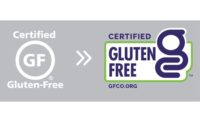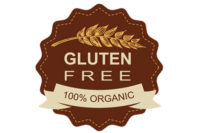When the gluten-free craze hit in 2004, I was already several years into my career as a food industry writer, with stints under my belt covering agriculture, food ingredient R&D, and restaurant menu development, as well as related culinary science trends, bolstered by my background working in restaurants when I was studying to be a writer at Purdue University. I was immersing myself in the culture, science and art of food, and loving every minute of it (I still do).
I also knew enough about the industry to have more than a little hesitation when it came to the enthusiasm surrounding gluten-free. Frankly, I saw it as a passing fad, maybe lasting a few years, just a pebble in an ocean of ideas.
Boy, was I wrong.
Gluten-free has maintained significant staying power and will indefinitely remain as a vital part of the industry. And one of the greatest contributions the gluten-free sector has offered to the industry overall is its wider diversity of grains, pseudo-grains, seeds, etc. that product developers and chefs made use of. It took a whole new toolbox to formulate acceptable wheat-free versions of products that had long relied on gluten for structure and other functional and nutritional contributions. As supply ramped up for those new formulation tools, folks across the board started experimenting. So-called “ancient” grains gained newfound attention. Grain-free structural ingredients from ethnic cuisines, like cassava, found new use. These ingredients were catalysts for innovation.
For many people across the industry, it wasn’t a question of either or—it was both. These were trends that bridged the gap between mainstream and gluten-free R&D.
Some snack and bakery products likewise bridge the demographic gap between gluten-free and mainstream consumers. Rice crackers—hugely popular with people across Japan—is one of those categories. And TH Foods, the focus of our cover story this month, via its fast-growing Crunchmaster brand, does a great job merging the best traditional Japanese rice cracker qualities with American tastes. They have products that work well with cheeses, dips and spreads, and others with pronounced flavor profiles that work great out of hand. They were hugely into rice crackers before gluten-free hit the market, but they found a much-wider audience after the boom. And now—even though gluten-free has, by most indications, plateaued—their products are reaching even further into the market.
After all, when good ideas effectively bridge the gap, they bring so much more to the table.





